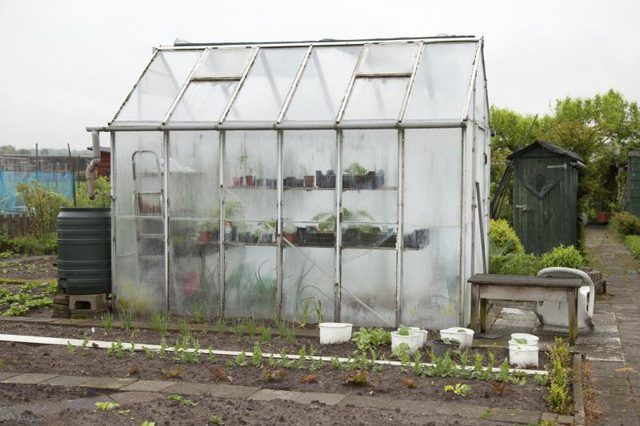Bulbs
Flower Basics
Flower Beds & Specialty Gardens
Flower Garden
Garden Furniture
Garden Gnomes
Garden Seeds
Garden Sheds
Garden Statues
Garden Tools & Supplies
Gardening Basics
Green & Organic
Groundcovers & Vines
Growing Annuals
Growing Basil
Growing Beans
Growing Berries
Growing Blueberries
Growing Cactus
Growing Corn
Growing Cotton
Growing Edibles
Growing Flowers
Growing Garlic
Growing Grapes
Growing Grass
Growing Herbs
Growing Jasmine
Growing Mint
Growing Mushrooms
Orchids
Growing Peanuts
Growing Perennials
Growing Plants
Growing Rosemary
Growing Roses
Growing Strawberries
Growing Sunflowers
Growing Thyme
Growing Tomatoes
Growing Tulips
Growing Vegetables
Herb Basics
Herb Garden
Indoor Growing
Landscaping Basics
Landscaping Patios
Landscaping Plants
Landscaping Shrubs
Landscaping Trees
Landscaping Walks & Pathways
Lawn Basics
Lawn Maintenance
Lawn Mowers
Lawn Ornaments
Lawn Planting
Lawn Tools
Outdoor Growing
Overall Landscape Planning
Pests, Weeds & Problems
Plant Basics
Rock Garden
Rose Garden
Shrubs
Soil
Specialty Gardens
Trees
Vegetable Garden
Yard Maintenance
How to Start Seeds in a Greenhouse
How to Start Seeds in a Greenhouse. A greenhouse, whether it's a small one on your windowsill or a large freestanding glass house, provides warmth and humidity that will helps seeds sprout and grow. Planting time depends on the specific plant, but you can start most vegetables and summer annuals six to eight weeks before the last expected spring...

A greenhouse, whether it's a small one on your windowsill or a large freestanding glass house, provides warmth and humidity that will helps seeds sprout and grow. Planting time depends on the specific plant, but you can start most vegetables and summer annuals six to eight weeks before the last expected spring frost. In large greenhouses, you can start earlier and grow larger transplants or grow the plants all season in the greenhouse environment.
Pointers On Potting
The type of seedling pots or trays depends on the type of greenhouse you are using and the plants you are growing. Small windowsill or tabletop greenhouses usually have their own planting tray with a detachable clear lid. Verify the bottom of the tray has drainage holes, and set it inside a second tray to catch any draining water. Trays also work well in freestanding greenhouses or small temporary plastic greenhouses, but you can use anything as a tray and set seedling pots or cell packs inside. The tray catches the draining water while also making it simpler to move the seedlings around in the greenhouse. If you reuse pots or trays, soak them in a one part bleach to nine parts of water for 30 minutes, and then allow them to air dry before adding a potting medium. For plants that do not like their root systems disturbed, use peat pots or peat pellets, as you then can plant the entire biodegradable pot into the garden.
Soil Mixes and Seed Sowing
A well-drained and sterile potting media works best for starting seeds. You can create your own mix suitable for seed starting in a greenhouse by combining 2 quarts each of shredded sphagnum moss and vermiculite, and then mixing in 1 tablespoon of limestone and ? tablespoon of 20 percent superphosphate. Water the soil until it's evenly moist. Sow the seeds at the depth recommended on the seed packet, usually twice their depth. If you plant in trays, space seedlings 2 inches apart in rows set 2 inches apart. For tabletop greenhouses, place the clear cover on top the tray after planting, or cover the tray with a clear plastic bag. Freestanding and plastic greenhouses don't usually require covers because higher humidity is maintained inside the greenhouse structure.
Successful Sprouting Temperatures
Seedlings usually take five to 21 days to sprout, depending on the specific plant. The soil doesn't usually require water until after germination, but you can water lightly if the soil surface begins to dry. Most seeds require a temperature of between 70 and 80 degrees Fahrenheit to germinate. Seedling heat mats, placed beneath the trays, are sometimes necessary in unheated outdoor greenhouses. Use a thermometer to monitor the temperature in the greenhouse and in the soil so you can maintain it properly.
Light and Fertilizer Needs
After the seedlings germinate, remove the cover from tabletop greenhouses. Freestanding and plastic greenhouses may require venting so moisture doesn't build up on the seedling foliage or to maintain a 60 to 70 F temperature for healthy growing. Provide the seedlings with full, all-day sunlight or place them 3 to 4 inches beneath a grow light fixture for 14 to 16 hours a day. Seedlings become too tall and spindly when the light system is placed too far away from the pot. Seedlings need watered when the soil surface feels dry. Begin fertilizing the seedlings every two weeks with an all-purpose soluble fertilizer, such as a 24-8-16 blend diluted at the rate of ? teaspoon of fertilizer per 1 gallon of water.